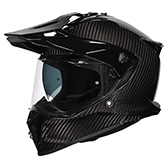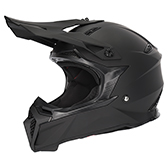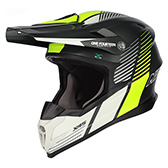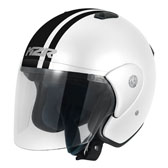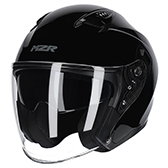Helmet Size Charts
Get the perfect fit for your M2R helmet with our array of replaceable genuine pare parts and accessories. Whether your helmet is a little loose, or you need a bit more room, our fitment guides below have all the information for which size parts will help you achieve the desired fit for your head shape.
Current Model Range Size Charts


How do I find the right motorcycle helmet size?
Finding the right helmet size is as easy as measuring the diameter of your head approximately 2.5cm above your eyebrows. Just use a soft, flexible tape measure to horizontally around your head and you’ll likely find the right size for you. It’s important that the tape doesn’t angle up or down as this will provide an inaccurate measure.
Select the helmet size that is closest to your head measurement from the sizing guidelines above. If your head measurement falls between two helmet sizes, first try on the smaller of the two helmets. The fit should be snug but not uncomfortable. You should not feel any pressure points from the helmet padding, nor should the helmet be loose enough to move in any direction. If it’s easy to put on, it’s too big for you. Helmets will appear to become larger over time due to regular movement in the padding – as you put it on/off you’re putting the largest part of your head through the smallest part of the helmet so softening of the padding over time is expected – so make sure you start with a snug fit. It should be tight to get on and off, but not uncomfortable.
Cheek pads should be firmly pushed into your cheeks. They are designed to push in so they can mould to your face for support; don’t be concerned about a little bit of excess pressure here as they are meant to be close-fitting to provide long-lasting support.
There should be no space between your brow and the inner lining – if you can insert a finger between your brow and the lining, you should try a smaller helmet.
If you’re in one of our dealers, ask to keep the helmet on your head for a while and walk around the showroom. Does pressure increase as you wear it? Can you see clearly? Is it comfortable? If you’re feeling happy with the helmet, you’ve found the right one for you.
How do I test my helmet so I know it is the right fit?
There are a few things you can do to check the correct helmet fitment. Once you’ve put the helmet on your head with the chin strap securely fastened, try the following:
- Place your hands on either the side of the helmet and while keeping your head as still as possible, try moving the helmet. This includes left and right movement as well as up and down. If you can feel movement between your head and the padding, try a smaller size.
- With the helmet on your head, pull down on the chin bar. If it starts to slip down your forehead, the helmet is too big. With gentle pressure, the helmet should grab and catch the skin on your forehead to prevent it slipping. If it slips, you should try a smaller helmet.
- Place your hands at the back of the helmet and try to push it off your head by rotating it forward. There should be no movement.
Why is the right fit important?
Your helmet must fit properly to give you the best possible protection when riding at high and low speeds. Whilst no helmet can protect the wearer against all potential impacts, having the correct fit will maximise head protection. This means the helmet must fit properly with the chin strap and retention system securely fastened under the chin. Riding without a helmet or with a helmet strap that is not securely fastened with a chinstrap is dangerous as the helmet could come off in an accident, resulting in severe injury or death.
Please note that the above fitment chart is a guide only and should be used as reference. It’s important to try on a helmet to confirm the correct fitment.
What happens if my helmet fit is too loose?
If a helmet is too loose it will not provide adequate protection in the event of an impact as it may come off or be dislodged. Additionally it could move while at speed, particularly with wind, and will become a bigger problem the faster you ride. If your head isn’t supported correctly by the internal protection system, your head could have a double impact in the event of an accident – once when the helmet has the initial impact and another when your head hits the inner wall of the helmet. A snug fit with your head touching all internal support areas means your head and helmet are acting as one and the technology that manufacturers develop can work correctly to protect your head.
What should I look for when trying on a new helmet?
Fit is obviously important – both for comfort and safety – but also check your field of vision and freedom of movement. With the helmet on, ensure you can move your head up, down, left and right. This should be comfortable and not have any obstructions. If you ride with protective gear, have that on when testing your freedom of movement with the helmet so you can identify any limitations with your gear. You should be able to comfortably see and move to safely operate a motorcycle with your helmet on.



